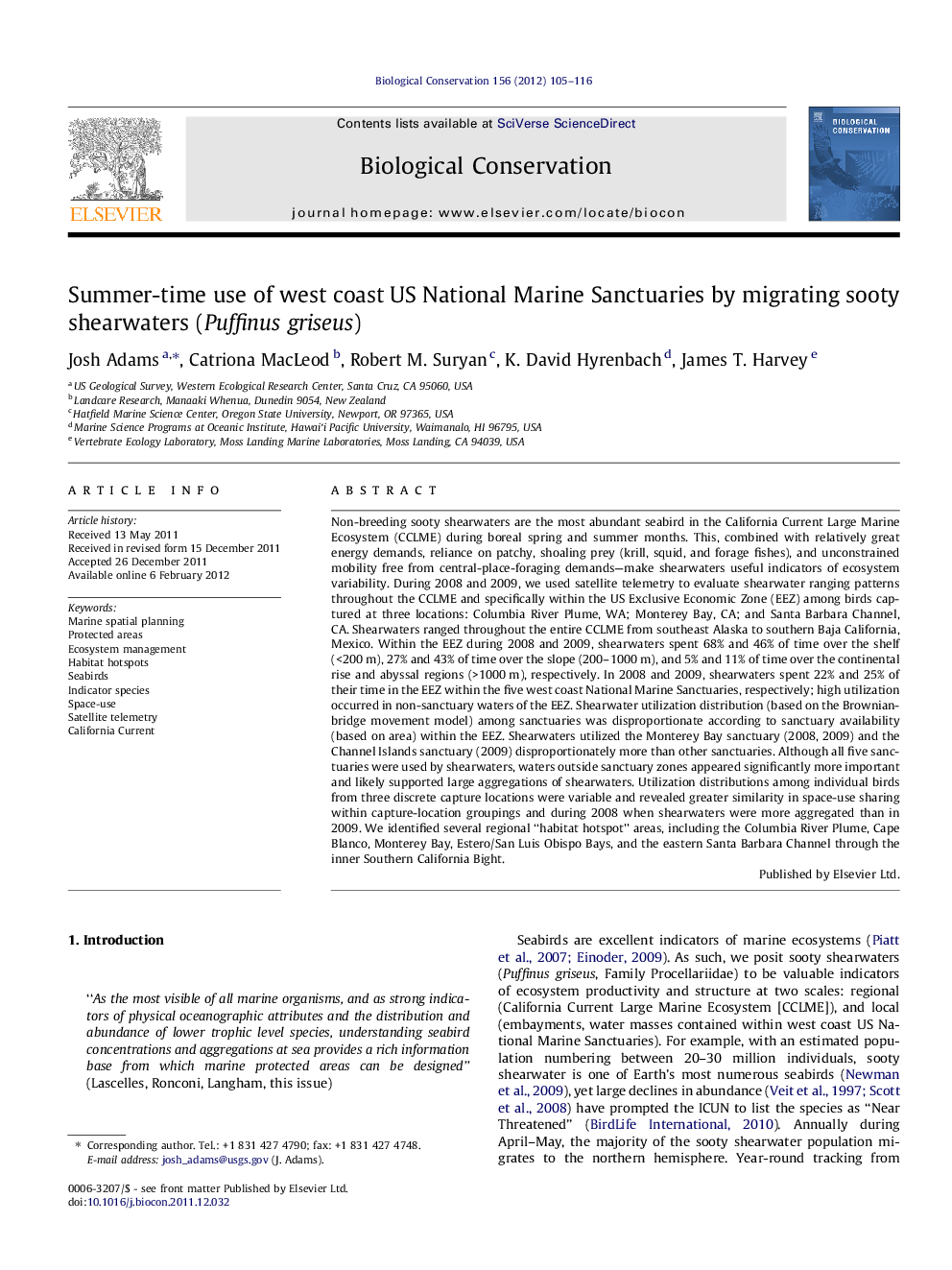| کد مقاله | کد نشریه | سال انتشار | مقاله انگلیسی | نسخه تمام متن |
|---|---|---|---|---|
| 4385159 | 1617945 | 2012 | 12 صفحه PDF | دانلود رایگان |

Non-breeding sooty shearwaters are the most abundant seabird in the California Current Large Marine Ecosystem (CCLME) during boreal spring and summer months. This, combined with relatively great energy demands, reliance on patchy, shoaling prey (krill, squid, and forage fishes), and unconstrained mobility free from central-place-foraging demands—make shearwaters useful indicators of ecosystem variability. During 2008 and 2009, we used satellite telemetry to evaluate shearwater ranging patterns throughout the CCLME and specifically within the US Exclusive Economic Zone (EEZ) among birds captured at three locations: Columbia River Plume, WA; Monterey Bay, CA; and Santa Barbara Channel, CA. Shearwaters ranged throughout the entire CCLME from southeast Alaska to southern Baja California, Mexico. Within the EEZ during 2008 and 2009, shearwaters spent 68% and 46% of time over the shelf (<200 m), 27% and 43% of time over the slope (200–1000 m), and 5% and 11% of time over the continental rise and abyssal regions (>1000 m), respectively. In 2008 and 2009, shearwaters spent 22% and 25% of their time in the EEZ within the five west coast National Marine Sanctuaries, respectively; high utilization occurred in non-sanctuary waters of the EEZ. Shearwater utilization distribution (based on the Brownian-bridge movement model) among sanctuaries was disproportionate according to sanctuary availability (based on area) within the EEZ. Shearwaters utilized the Monterey Bay sanctuary (2008, 2009) and the Channel Islands sanctuary (2009) disproportionately more than other sanctuaries. Although all five sanctuaries were used by shearwaters, waters outside sanctuary zones appeared significantly more important and likely supported large aggregations of shearwaters. Utilization distributions among individual birds from three discrete capture locations were variable and revealed greater similarity in space-use sharing within capture-location groupings and during 2008 when shearwaters were more aggregated than in 2009. We identified several regional “habitat hotspot” areas, including the Columbia River Plume, Cape Blanco, Monterey Bay, Estero/San Luis Obispo Bays, and the eastern Santa Barbara Channel through the inner Southern California Bight.
► We used satellite telemetry to track non-breeding Sooty Shearwaters in 2008–09.
► Sooty shearwaters spent majority of their time at sea over the continental shelf.
► Shearwaters spent 25% of their time within 5 National Marine Sanctuaries.
► High shearwater utilization occurred in non-Sanctuary waters of the EEZ.
► We mapped several important shearwater “habitat hotspots”.
Journal: Biological Conservation - Volume 156, November–December 2012, Pages 105–116